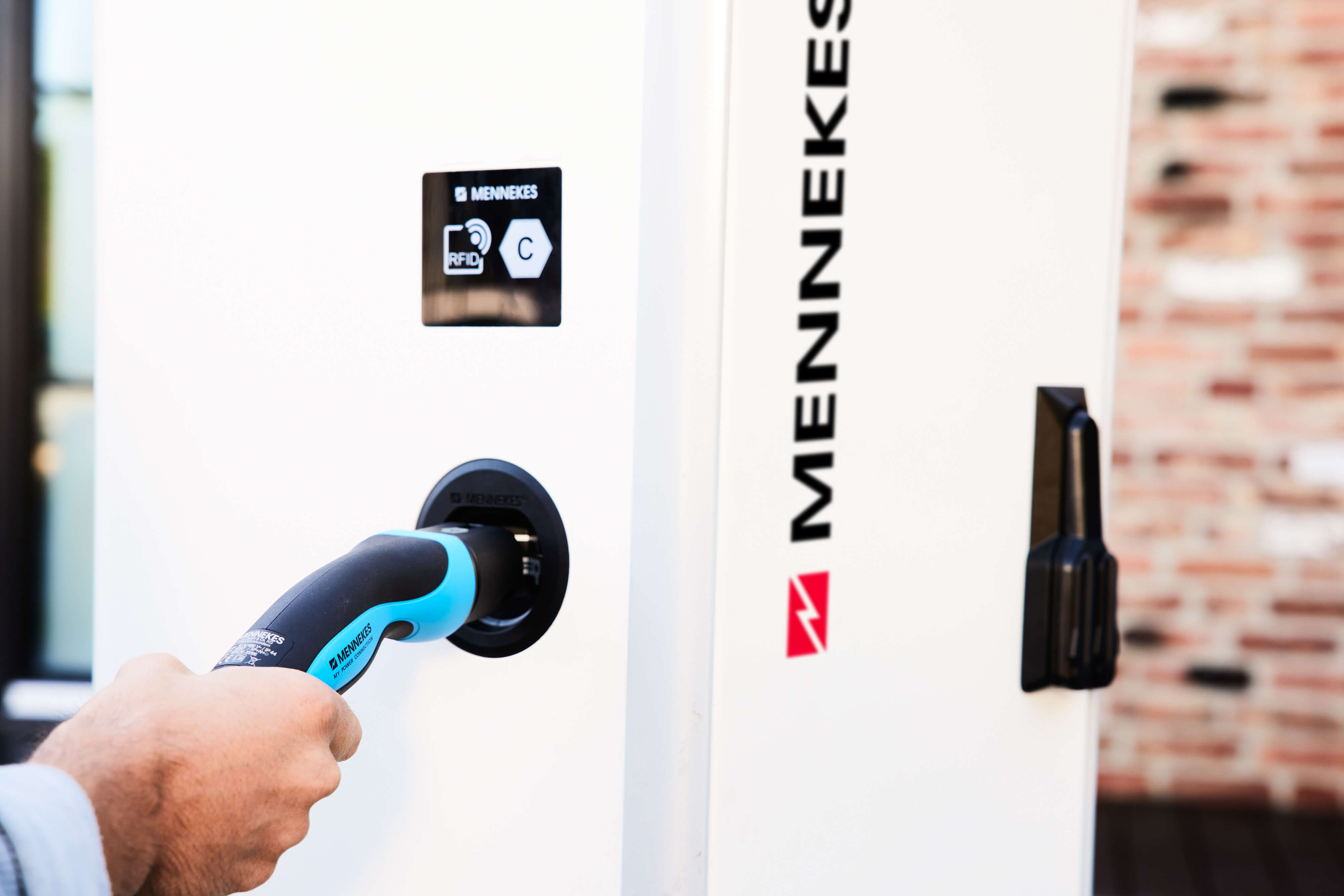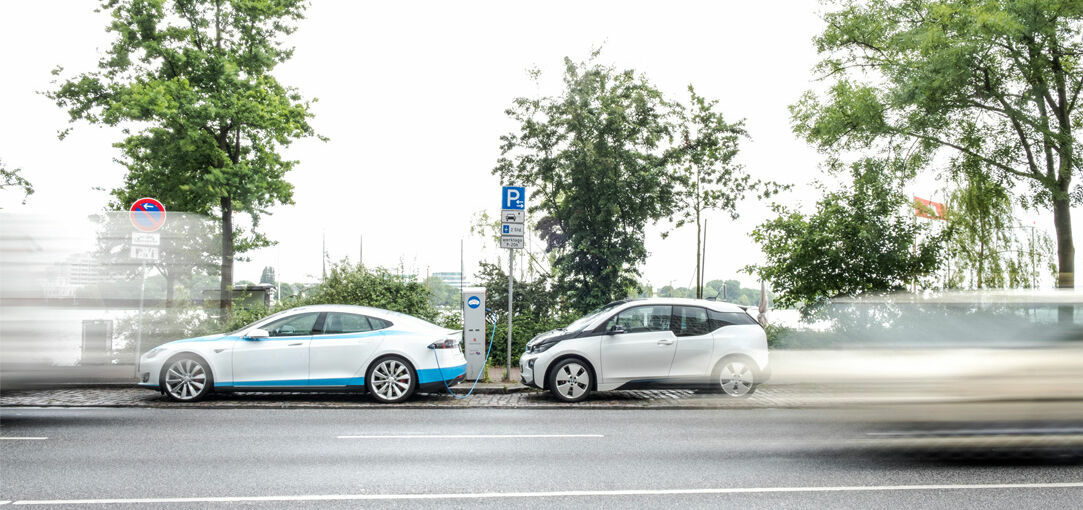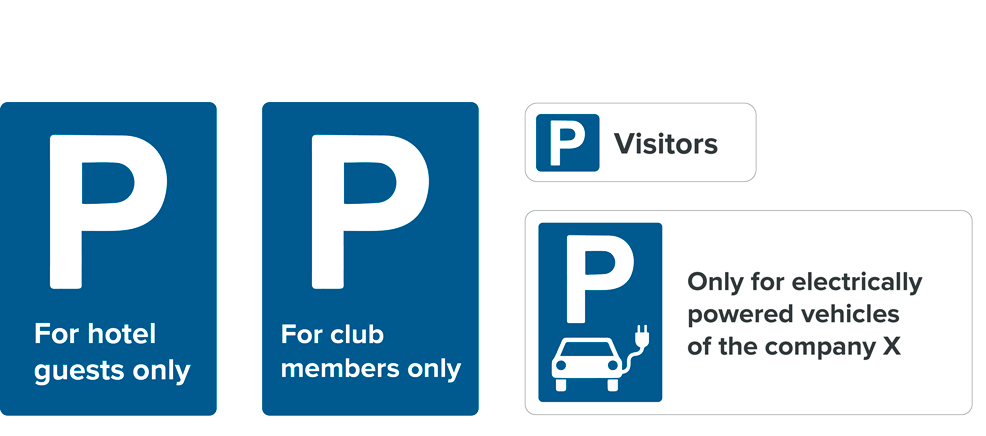POWER YOUR BUSINESS!
CHARGE UP YOUR DAY!
ELECTRIFY YOUR MOBILITY
New from 2025/26/27: Delegated acts and implementing acts have extended the AFIR since 2025 – new requirements for publicly accessible charging points have been added. From January 2026, ISO 15118 will be mandatory throughout. From 2027, new requirements will also apply to charging points that are not accessible to the public.
The public accessibility of charging points for electric vehicles is a fundamental requirement to establish electromobility. In this context, the Ordinance on the Development of Alternative Fuels Infrastructure (AFIR) is of particular relevance. From April 13, 2024, recharge on an ad-hoc basis at charging points will be mandatory, that means the possibility to charge and pay without a prior electricity contract. In order to understand which charging points are covered by the AFIR, a clear distinction needs to be made between publicly accessible and non-publicly accessible charging points.
The latter are characterized by certain features and markings that restrict the group of charging point users. The AFIR focuses only on publicly accessible charging points that are accessible to a wide range of people without individual restrictions. The criteria and features that determine the public nature of a charging point in accordance with the AFIR are explained in more detail below.

Since 13 April 2024, operators of publicly accessible charging stations in the EU have been obliged to enable selective charging without a prior contract – also known as ad-hoc charging. Users must be able to pay using a "widely used payment instrument". According to AFIR, this particularly includes debit and credit cards.

The following applies to all newly installed DC charging points with a charging capacity of 50 kW or more:
Payment must be possible using common debit or credit cards. Implementation can be carried out either via an integrated card terminal or a central payment terminal at the site.

For charging points with lower power (e.g. AC charging points):
Alternative, secure payment methods are permitted – for example, via a QR code that leads to the payment page. As before, the payment process must be secure and PSD2-compliant.


Operators must ensure that QR codes are easy to read and tamper-proof.
So-called doming stickers, which protect the code from scratches and tampering, have proven effective.
The payment page must also comply with the requirements of the Payment Services Directive II (PSD2) – including secure authentication, e.g. via biometric procedures or device locks.

A charging point is considered publicly accessible if the associated parking lot is accessible to the general public without specific markings or signage. This includes charging points on roadsides or in parking lots without barriers or signs.

On the other hand, a charging point is not public if the operator makes it clear through visible markings or signage that the use is restricted to a specific group of people. Examples are signs such as "Parking only for..." or similar, which specify a specific use. Caution: "Parking for customers only" is not sufficient, as "customer" is too general and vague.
The AFIR takes into account that the public nature of a charging point is not solely influenced by registration. Rather, the decisive factor is that the primary business purpose of the parking lot is to serve a broad group of people without individual restrictions.

Between 2025 and 2027, further mandatory requirements will come into force according to AFIR.
These stem from delegated acts and an implementing act of the EU Commission. They refine the AFIR framework and define technical specifications and implementation deadlines – particularly regarding open data, technical standards, and private charging infrastructure.
From 14 April 2025, operators of publicly accessible charging points will be obliged to provide certain static and dynamic data free of charge:
Static data: e.g. location, connector type, access and payment conditions – must be updated within 24 hours of change.
Dynamic data: e.g. availability, current charging price – must be updated within 1 minute.
This data must be made available in DATEX II format from 14 April 2026 and transmitted to central platforms such as Mobilithek. The aim is to increase user-friendliness and make charging points easier to find and compare.
The AFIR obliges operators to comply with the ISO 15118 series of standards, which regulates communication between the vehicle and the charging point – especially for functions such as Plug & Charge or bidirectional charging.
Due to the link with the Energy Performance of Buildings Directive (EPBD), certain AFIR requirements also apply to charging infrastructure that is not accessible to the public – such as on company premises or in residential buildings. Particularly relevant here is the obligation to support ISO 15118-20 from 2027.
For all charging points installed before the respective deadlines, grandfathering applies. There is only an obligation to retrofit in certain cases – e.g. for DC charging points along the TEN-T traffic axes by 1 January 2027 at the latest.
Detailed information on the delegated acts can be found here: